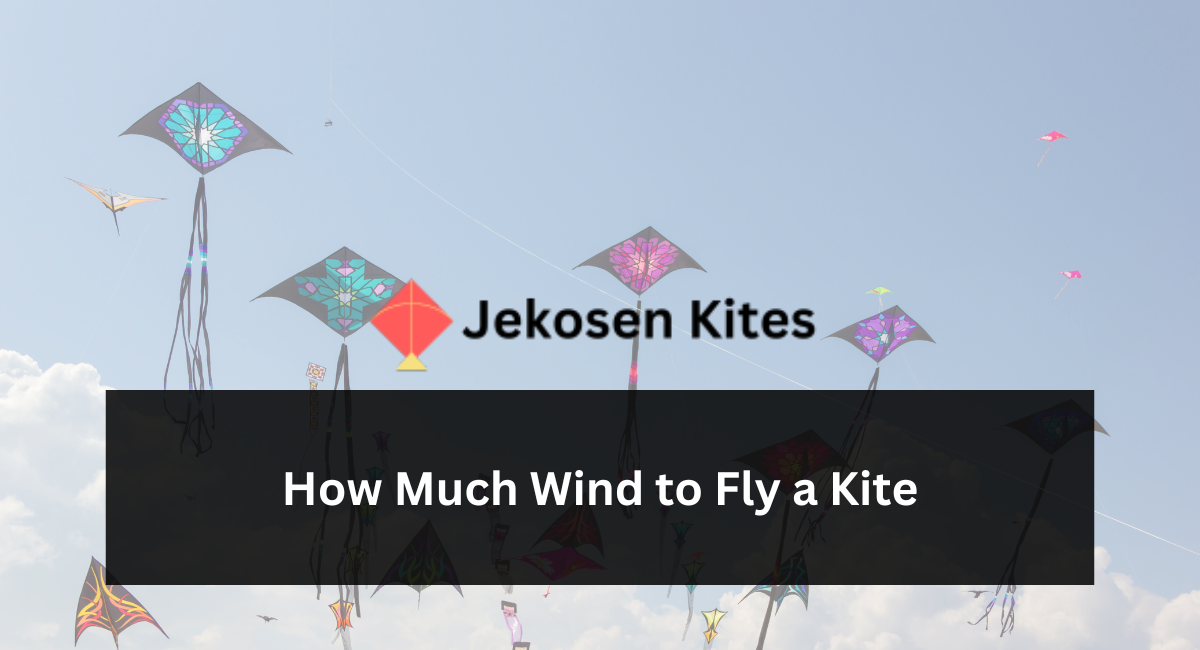Kite flying is a skillful art that gracefully moves with the balance of the wind and the flyer’s ability. It is an activity that links us to the natural world, utilizing the unseen power of the wind to generate moments of happiness and calmness.
However, in order to accomplish that ideal flight, it is crucial to comprehend the subtleties of wind conditions. So, what amount of wind is necessary to fly a kite, and what other factors should you take into account for an optimal kite-flying experience? Let’s discover.
Choose the Appropriate Day and Time
The key to effective kite flying begins with selecting the appropriate day and time, which essentially involves choosing the suitable wind conditions. Optimal wind conditions for flying a kite are typically between 8 and 15 miles per hour.
Nevertheless, the realm of kites is varied, with certain kites that can glide in as low as 3-4 miles per hour of wind and others specifically crafted for interior flying, where the wind is generated solely by your own movements.
At the opposite side of the range, durable soft kites such as parafoils are capable of handling gusts exceeding 25 miles per hour, although flying in such conditions necessitates expertise and well-adjusted kites.
Consistent winds provide optimal circumstances for kite flying, but unpredictable breezes present a problem, making it challenging to retain control. Additionally, it is important to mention that winds generally become more consistent and powerful at greater altitudes, which benefits kites that can reach great heights.
Curiously, the start and finish of daylight hours are frequently not optimal for kite flying, as breezes tend to be gentler and less consistent. Nevertheless, while flying kites during nighttime, with appropriate lighting under suitable circumstances, the experience can become genuinely enchanting.
The Beaufort Wind Scale, created in 1805 by Admiral Sir Francis Beaufort of Britain, continues to be a useful method for evaluating wind conditions without the use of instruments. Effective kite flying often happens at Force 3 and 4 on the Beaufort scale, however with the appropriate gear, Force 2 and 5 can also be pleasurable.
Choose the Appropriate Location
Deciding on the most suitable location is equally important as picking the ideal wind conditions.
The perfect location for flying a kite is a spacious area with unobstructed views, consistent wind, and ample space for your kite to move around. Open fields, parks, and beaches are excellent spots, providing unrestricted air circulation and plenty of room to release your kite line.
Wind acts similar to waves, changing in both speed and direction, and a consistent wind is important for a stable flight. To prevent turbulence, which can result in rough flights and reduced wind velocity, locate areas that are free from obstructions like trees, structures, or hills.
These obstacles can interrupt the movement of air and cause turbulence at a considerable distance, making it more difficult to launch and fly your kite. Although it is feasible to fly in tumultuous weather, calmer wind, which is frequently present over coastal beaches or expansive lakes, greatly improves the experience.
Security and Rules
Ensuring safety is crucial when flying kites. Stay away from power lines when flying kites, as tangled kites can cause dangerous situations. Operating aircraft in close proximity to vehicles, airports, or during adverse weather conditions is also hazardous and frequently restricted by laws, such as those established by the Federal Aviation Administration.
In addition, it is important to always be considerate of others’ personal space and safety by maintaining a distance from individuals and refraining from flying directly above them.
Choose the Appropriate Kite
The variety of kite designs ensures that there is a kite suitable for almost every wind condition. Experienced kite enthusiasts frequently bring along several kites that are suitable for the wind conditions of the day.
For stronger winds, choices include kites with extended tails, increased flexibility, reduced sail areas, or ventilated sails for improved control. For less windy conditions, it is better to use kites without tails, frames that are not heavy, larger sail surfaces, and lower bridle adjustments.
Ensure you have the appropriate materials
Convenience and readiness improve the enjoyment of flying kites. Necessary items include sunglasses, sunscreen, food, a first aid kit, sun shade or canopy, and comfortable seats.
Hand protection is beneficial for managing kites that have a significant pulling force, and toys that don’t require wind can keep everyone entertained while the air is calm. Remember to bring a camera to capture the memories of the day.
Flying kites is more than simply a pastime; it’s a way to engage with the natural world, test your abilities, and appreciate tranquil moments outside. By selecting the appropriate wind conditions, location, and kite for the day, you establish the foundation for a prosperous and pleasant flight.
Please keep in mind the importance of following safety guidelines and regulations in order to create an enjoyable experience for all participants. Therefore, assess the wind, prepare your kite, and be prepared to appreciate the joy of soaring on an ideal day.



